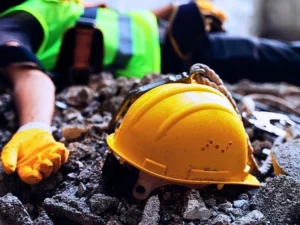Improper storage and handling of hazardous materials in the workplace pose significant injury risks from fires, explosions, and contamination to employees.

Working Around Hazardous Materials
The Occupational Safety and Health Administration (OSHA) has strict regulations governing the storage and handling of hazardous materials in the workplace. OSHA regulations outline where and how hazardous materials must be stored to protect employees from contamination and injury. Many types of businesses use hazardous materials that pose dangers to workers. The degree of hazard depends on the chemical concentration. Common hazardous materials in the workplace include paints and solvents, cleaning chemicals, acids and caustic substances, glues, petroleum products, and pesticides.
There’s a variety of health hazards that can result from exposure to a hazardous substance. Mild exposure often causes headaches, nausea and vomiting, and skin rashes. Heavy or prolonged exposure can result in more serious problems including poisoning, respiratory distress, nerve damage, liver and kidney damage, birth defects, cancer, and death. If hazardous materials are improperly stored and handled, they pose significant injury risks to workers from fires, explosions, and toxic gases released into the air or water.
OSHA Regulations for the Storage of Hazardous Materials
There are numerous OSHA regulations that include requirements for the storage of hazardous materials. Many regulations deal with extremely flammable substances like liquefied hydrogen, as well as with certain groups of substances that can cause fires, explosions, and toxic fumes. OSHA regulations govern the following:
- Design and location of storage areas and building materials
- Drainage and protection from spills
- Labeling of materials
- Storage and transporting of materials
- Protective equipment and clothing for workers
- Proper Ventilation
OSHA’s Hazard Communication Standard (HCS) is designed to ensure that information about chemical and toxic substance hazards in the workplace are properly communicated to workers. To ensure safety in the workplace and protect workers from accidents and injuries, chemical manufacturers are required to evaluate the hazards of the chemicals they produce and prepare safety labels and information for employers. In addition, all employers with hazardous chemicals in their workplaces must provide safety labels and safety data sheets to workers who are exposed to such chemicals in their jobs. OSHA requires all employers to train workers on the safe storage and handling of chemicals and hazardous materials in the workplace, and provide workers with protective equipment and clothing to prevent injury.







